Best MPPT Solar Charge Controllers 2022
Best mid-range MPPT solar charge controllers up to 40A
In this article, we review six of the most popular, mid-level MPPT solar charge controllers commonly used for small scale solar power systems up to 2kW. These are more affordable, lower voltage (100-150V) units, which are generally designed for 12V or 24V battery systems, although several can be used on 48V batteries. A number of these charge controllers also feature inbuilt load control terminals for basic DC lighting and other loads.
In this review, we don’t list simple PWM controllers used for DC lighting and basic systems since there are many sites already covering these entry-level PWM controllers. For high-performance MPPT solar charge controllers with higher input voltages up to 300V and current ratings from 60A to 100A, see our high-power MPPT solar charge controllers review.
What is a solar charge controller?
A solar charge controller, also known as a solar regulator, is a battery charge regulator connected between the solar array and battery. Its job is to regulate the solar output to ensure the battery is charged correctly and not overcharged. DC coupled solar charge controllers been around for decades and are used in most small scale off-grid solar power systems.
Top 6 Solar Charge Controllers
Mid-level solar controllers up to 40A
Smaller capacity MPPT solar charge controllers with a current rating from 20A to 40A are used for many different applications, including off-grid cabins and homes, RV’s, boats, caravans, telecommunications and remote site backup. These mid-range MPPT solar charge controllers are available from many different manufacturers. However, this review will focus on the most popular and best-quality charge controllers from the most reputable manufacturers, which have been on the market for several years.
| No# | image | Model | Current rating (A) | Max Voltage (Voc) | Batt Voltages | Price range $ |
|---|---|---|---|---|---|---|
| 1 | 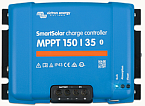 |
Victron SmartSolar MPPT | 35 A | 150V | 12V 24V 36V 48V | $350 to $480 |
| 2 | 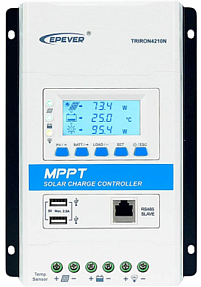 |
EPever TRIRON Series | 40 A | 150V | 12V 24V | $150 to $250 |
| 3 | 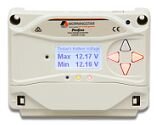 |
Morningstar ProStar MPPT | 40 A | 120V | 12V 24V | $460 to $540 |
| 4 | 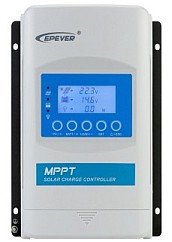 |
EPever XTRA Series | 40 A | 150V | 12V 24V 36V 48V | $130 to $190 |
| 5 | 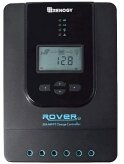 |
Renogy Rover | 40 A | 100V | 12V 24V | $150 to $190 |
| 6 | 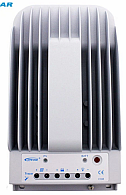 |
EPever BN Series | 40 A | 150V | 12V 24V | $170 to $250 |
Comparison Criteria
In this review, we rank the various charge controllers according to a number of important criteria, including build quality, MPPT tracking speed, battery voltage range, operating temperature range (heat dissipation), monitoring, real-world performance and price. In our reviews, we generally rank performance and quality over affordability, so in this case, we rate the unit price lower than other criteria. This may come across as bias towards the more expensive models. However, based on real-world experience, testing and performance monitoring, the higher-end controllers have proven to outperform the cheaper models in almost all situations.
Build quality
MPP Tracking
PV Voltage range
Battery voltage options
Monitoring
Price / Value
Configuration options
Read more about selecting and correct sizing a solar charge controller in the MPPT solar charge controllers explained article.
1. Victron SmartSolar
Victron Energy is considered a world leader in power electronics and specialises in manufacturing equipment required for off-grid and stand-alone power systems, including inverters, batteries, chargers, monitors and solar charge controllers. Based in the Netherlands, Victron manufactures many products in India and has become well-known for producing quality, reliable, off-grid battery inverter-chargers and a wide range of quality MPPT solar charge controllers.
Victron offers a vast range of solar charge controllers, from small 10A PWM models to high-performance 200A MPPT varieties with high voltage inputs up to 450V. The MPPT 150V models appear very simple in design and may not have a display or load control terminals like many others; however, Victron outperforms the competition in MPPT tracking performance, communications and monitoring.
Victron has the most advanced system monitoring with an inbuilt Bluetooth connection offering easy programming and configuration, plus remote firmware updates, which add extra features and options. The display-less design may not please all users, but the fast, accurate MPPT tracking, high build quality, and V.E. smart networking options are stand-out features.
Smartsolar MPPT 150V 35A
Pros:
Fast MPP Tracking
150V max Voc
12V, 24V or 48V batteries
Compatible with LiFePO4 Lithium batteries
Very advanced monitoring app
Wide operating temperature up to 60°C
Inbuilt temp sensor
Optional wireless battery sensor
Easy remote firmware updates
5 Year warranty
Cons:
No display
No load control
Expensive $$$
See full details in the Victron Energy Review.
2. EPever TRIRON Series
EPever was founded in 2007 and has grown rapidly to become one of the largest Chinese manufacturers of cost-effective power products including a wide range of MPPT solar charge controllers. The Triron series is the next evolution to the well-known Tracer series of MPPT’s.
The TRIRON series from EPever is a much more advanced and user-friendly version of the original AN series of charge controllers. The TRIRON controllers have a unique swappable display module as well as a swappable interface module with an RS485 communication option that can be used for a number of different applications. Note, maximum PV voltage is either 100V or 150V depending on the model. The 5 button display module is very easy to use and provide all the important information you need about the PV, battery and load. Wireless access is available via the eBox-BLE Bluetooth adapter or the Wifi adapter is available for remote monitoring.
TRIRON Series MPPT 150V 40A
Pros:
Fast MPP Tracking
150V max Voltage Voc (TRIRON 3215N & 4215N)
Easy to use with a large clear display
Compatible with Lead-acid and Lithium batteries
40A Load control
Swappable display and interface modules
RS485 Interface for communications and remote control
USB Port and relay control options
Optional Temp sensor
Cons:
Add-on module required for Wifi and Bluetooth
Screw Terminals are a little small
3. Morningstar Prostar MPPT
Morningstar are a well-established company based in the US with 25 years of experience in engineering and manufacturing high-performance solar charge controllers. Morningstar is widely recognized as developing some of the best quality products on the market with high levels of protection against extreme environments, lightning surges and high operating temperatures.
The Prostar range of MPPT charge controllers are available in 25A and 40A versions with a 120V input voltage limit. The extremely fast MPP tracking can perform a full voltage sweep in less than 1 second using the Trakstar technology. The device features good size terminals protected under a front cover, including load control output terminals rated up to 30A, plus a clear backlit LCD display and can easily programmed using the 4 large buttons. However, the very high price tag means the Prostar MPPT series is out of reach for many users.
Prostar MPPT 120V 40A
Pros:
Very fast MPP Tracking
120V max Voc
Compatible with LiFePO4 Lithium batteries
Wide operating temp up to 60°C
30A Load control
High surge protection
Optional Battery sensor
5 Year warranty
Cons:
No Wifi or Bluetooth monitoring
Very expensive $$$$
4. EPever XTRA Series
EPever, also known as EPsolar, was founded in 2007 in Beijing, China and has grown rapidly to become one of the largest manufacturers of cost-effective solar power products including a wide range of MPPT charge controllers. The XTRA series of MPPT’s released in early 2018, have only recently become more popular due to the low cost, easy setup, and lithium battery compatibility.
The XTRA series is available in 10 different options with 3 display types, current ratings from 10 to 40A, battery voltages from 12V to 48V, and input voltage limit up to 150V. In comparison to the older AN series which had a 100V input limit, the XTRA series features lithium battery compatibility and a higher input 150V voltage (Voc) on the 30 and 40A models, plus a modern look and concealed screw terminals. Note, the two-button version with LCD is basically the older AN series controller in a modern package.
XTRA Series MPPT 40A
Pros:
Good MPP Tracking
Three display options with a clear simple LCD
Compatible with most Lithium LiFePO4 batteries
40A Load control
Optional MT50 display
Optional Temp sensor
Optional Wifi and Bluetooth module
Low cost $$
Cons:
Screw terminals are a little small
Add-on module required for Wifi and Bluetooth
5. Renogy Rover
Renogy, founded in the US in 2014, recently became a very popular choice for solar enthusiasts across the world due to the low-cost, easy setup and good MPPT tracking. Renogy manufacture a wide range of affordable inverters, DC converters and solar charge controllers in China.
The Rover series from Renogy is a feature packed MPPT controller with a clear inbuilt display, plus a low-cost (optional) Bluetooth adapter which provides a great, easy to use interface with many configuration options. Load control terminals are built-in, although the output is limited to 20A. The overall build quality is quite good, however there are some area’s which could be improved, most notably the cable terminals which are far too small for a 40A controller.
Rover MPPT 100V 40A
Pros:
Good MPP Tracking
Clear Simple display
Compatible with Lithium (12.8V LiFePO4) batteries
20A Load control
Advanced Bluetooth app and user settings
Temp sensor included
Low cost $$
Cons:
Max 100V Voc
Very small cable terminals
1 year warranty
6. Outback BN series by EPever
The Outback Power Flexmax40 is made by EPever and is commonly known as the Tracer BN series which is a well known affordable MPPT controller.
EPever one of the leading manufacturers of cost-effective power products including a wide range of solar charge controllers. The well-known Tracer and TRIRON series of MPPT’s are a very popular choice for solar enthusiasts across the world due to the easy setup, good MPPT tracking, and low cost.
The first generation AN series is the best-known MPPT in the range, being a low-cost 100V unit with an inbuilt display. However, the BN series is the more expensive higher-performance version with many extra features including a 150V input voltage limit, heavy-duty robust design, large heatsink, and huge input terminals which can accept a cable size up to 50mm2 (1 AWG).
The obvious feature lacking from the BN series is the display. However, monitoring and configuration is available via the additional remote MT50 display which features a good clear LCD screen showing all the basic information required. Wireless access is also available via the eBox-BLE Bluetooth adapter.
Tracer BN Series MPPT 150V 40A
Pros:
Very large screw terminals
Large heatsink and wide operating temperature range
12V, 24V batteries
150V max Voc
Wide MPP voltage range
20A Load control
Remote MT50 display with settings and load control
Optional Temp sensor
Cons:
No inbuilt display
Slower MPP tracking
More expensive $$$


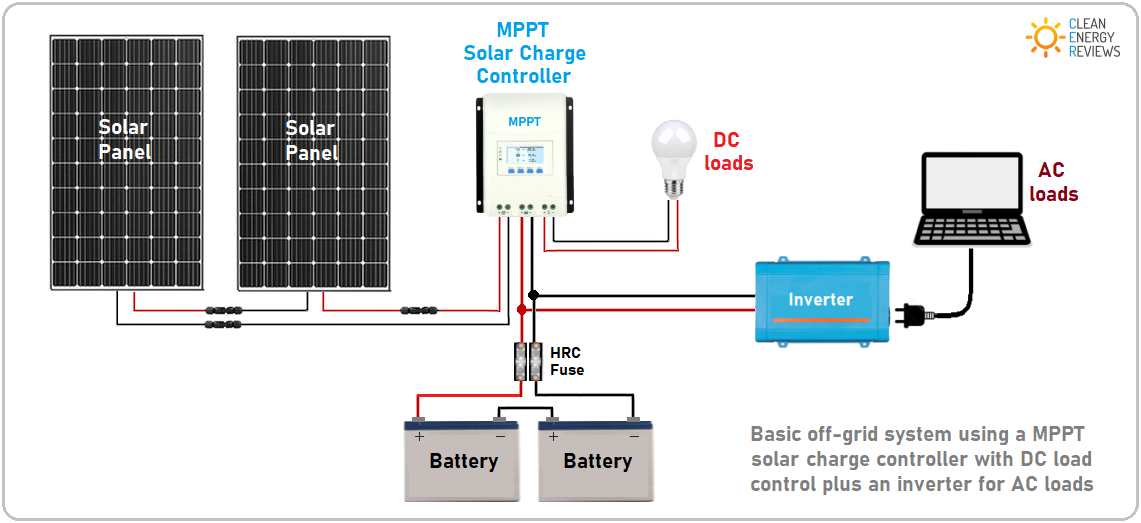



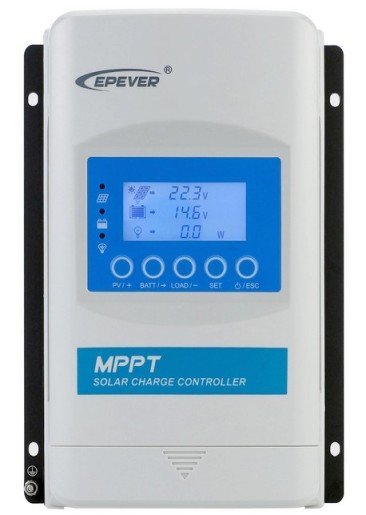



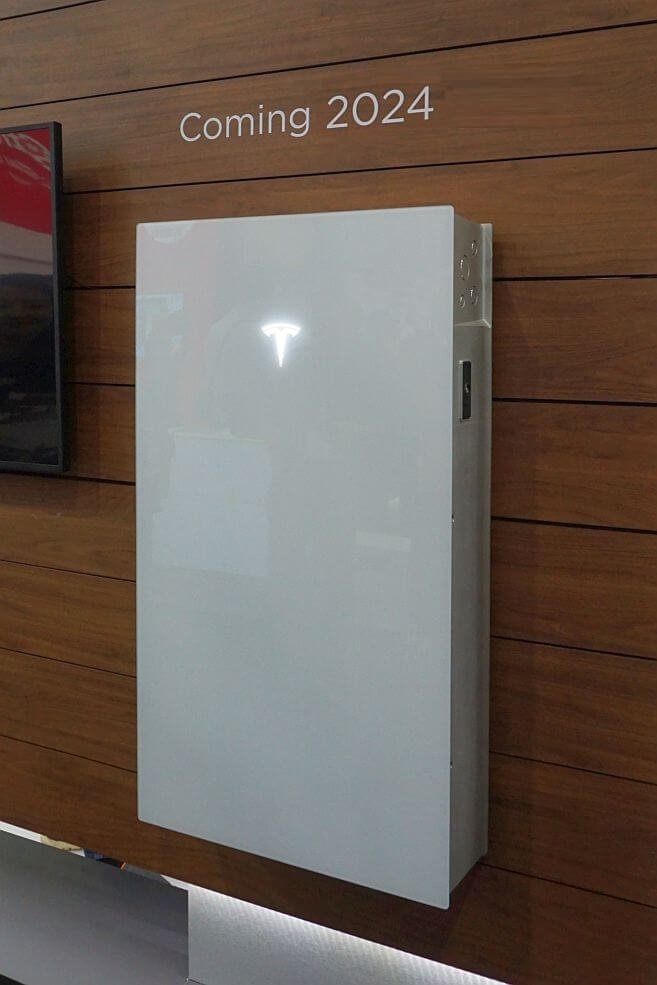



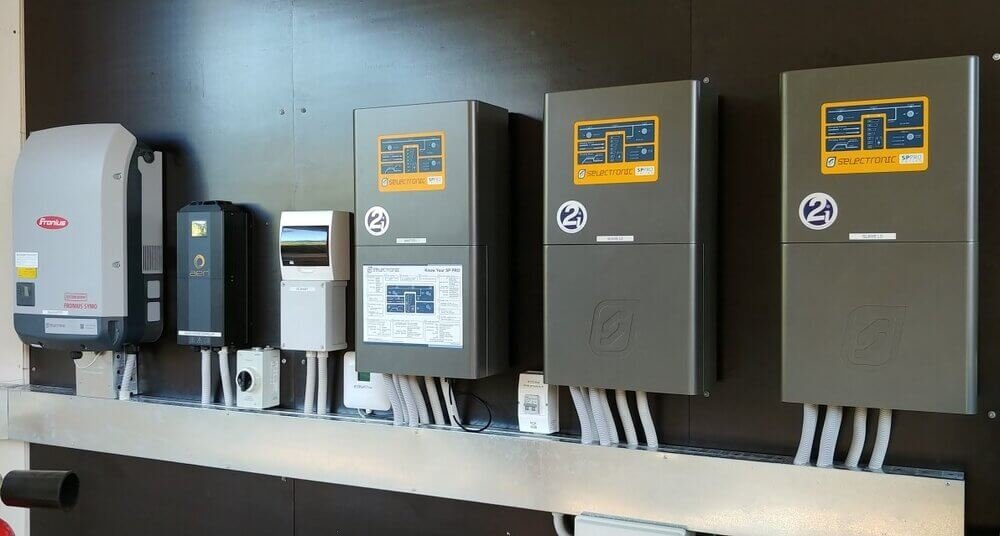
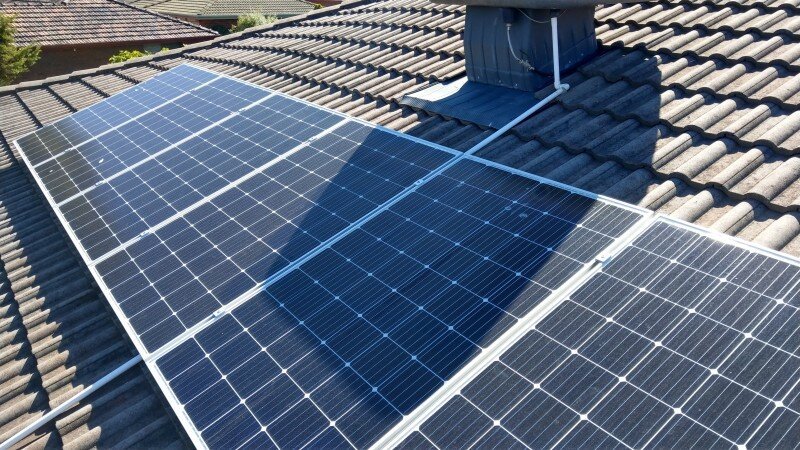


We review the best solar panels for your home from the world’s leading brands, including SunPower, REC, Panasonic, Q cells, Trina, and more. These manufacturers offer the highest performance, efficiency, and longest warranties, and they have a proven track record of reliability based on experience and independent testing by PVEL.